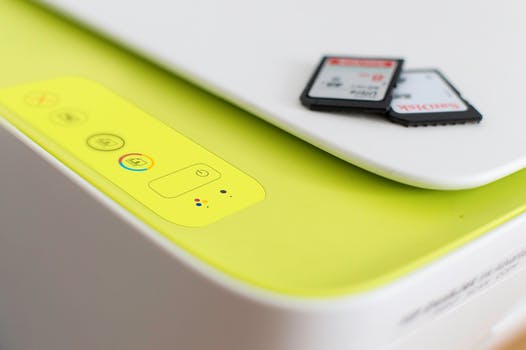When you’re running a business, printing is more or less inevitability. Even if you conduct online transactions for the most part, there would always be something to print out. These include receipts, bills, flyers, and many more paper-based materials.
However, environmental issues and the advantages of going green have now forced many companies to look at paperless options. Of these, reducing your printing footprint should be one of the first ones you consider. The reasons for this include the fact that it’s a relatively simple task and can save you quite a bit of money. Plus, reducing your paper output might also raise you in the eyes of your consumer base and clients.
Below are some ways in which you can go about reducing your printing activities. These would help you make your whole operating process more ‘green’ and hence lead to the related benefits:
Reducing Wastage
If you’re serious about making your printing environmentally friendly, the first step is obviously to reduce the number of sheets you print each day. Look at whether you can eliminate some of these sheets from your daily operations.
For instance, you may ask your clients if you may send them an electronic invoice instead of a hard copy. If they agree, you might be looking at a saving of thousands of sheets per month.
You should also strive to make every single sheet count. There’s no need to print thousands of flyers that no one’s going to look at or send out a paper memo to everyone about every single meeting. Go for a large poster for the next event, focusing on its colors and design in order to grab the audience’s attention. Send out email alerts and reminders to employees for any meetings. This would also ensure that they pay attention rather than skimming and throwing a memo away.
Research every step of your operations in order to help with reducing your paper waste. This way, you can streamline your working processes and make sure they’re updated as well.
Recycled Materials
The next step is to get on board the recycling train. This may seem to be an obvious point, but it’s surprising how many businesses overlook it when they’re trying to cut down on printing. In addition to using as little paper as you can, also focus on where your materials are coming from. If possible, go for recycled paper from a reliable source and do away with other kinds.
Your paper might currently come from a company involved in deforestation, illegal logging, and the damage of natural habitats. If you give them business, your operations wouldn’t exactly be ‘green’. Of course, recycled paper may also take up a lot of resources, but it’s certainly a responsible step in the right direction.
Sustainable Sources
When you’re looking around for paper sources, keep in mind that not all recycled paper is created equal. Some of it is of a very low quality, which might be fine for internal use. However, you should invest in a high-quality recycled paper for use with clients and on advertising flyers, posters, etc.
One solution here to start sourcing paper from a company that’s associated with organizations like the Forestry Stewardship Council or the World Land Trust. These programs work by protecting endangered habitats, especially forests and trees. Their member companies hence make sure that their papers are from sustainable, genuine sources that won’t affect the planet nearly as much.
Going Digital
The best way to reduce your printing footprint is to go digital as much as possible. This includes digital printing instead of the regular kind. Conventional printing uses a lot of water along with increasing the likelihood of deforestation. Plus, the process also uses dangerous chemicals for the plates, so digital is a much better option. It might not be completely eco-friendly, but it’s a start.
Digital printing also enables you to limit yourself in your printing quantity without any loss. Conventional printing can be tiresome and bulky to set up. Hence, it makes sense to do a large print run in order to minimize the cost per unit. Digital printing makes huge printing amounts less economical, so you’d actually be forced to minimize your requirements.
Changing Inks
It’s not just about keeping the printing to a minimum. Going green also involves making the printing operation more environmentally friendly. This could include using inks that are soy or vegetable-based, thus going the organic way. At the moment, you might be using metallic inks that would only harm the environment further. For digital purposes, go with non-toxic toner.
No Foils
Using foils can add a bit of flash to your advertising strategy, but this could be the most harmful use of printing for the environment. Hence, try to cut down on their use as much as possible. If you must have them, then consider using similar materials. You can also try to reduce their size.
Changing the Packaging
You can change up the packaging of your product by using more recycled materials and updating the way it’s manufactured. This way, you’ll get a greener packaging and also get to advertise your efforts in order to impress consumers. Plus, you don’t even have to worry much about the presentation.
For instance, you may consider using fewer coatings, do away with plastic, and make the packaging completely recyclable. You may also utilize 100% post-consumer waste and use organic materials for your wares.
Conclusion
Wasting paper on an individual and a company level is now deeply frowned upon. It’s an irresponsible and expensive activity, so modern businesses need to show that they’re aware of the issues with paper wastage. Your daily operations might currently be bogged down by paper mail, flyers, leaflets, brochures, and the like.
With so many modern advancements, there’s always a way around excessive paper printing. Follow the tips outlined above to stay on top of environmental concerns, and you might have a thriving paperless company in the future.


